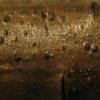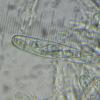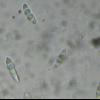
15-12-2025 21:11
 Hardware Tony
Hardware Tony
Small clavate hairs, negative croziers and IKI bb

15-12-2025 15:54
 Johan Boonefaes
Johan Boonefaes
Unknown anamorph found on the ground in coastal sa

15-12-2025 15:48
 Danny Newman
Danny Newman
Melanospora cf. lagenaria on old, rotting, fallen

15-12-2025 07:05
 Danny Newman
Danny Newman
Pseudosclerococcum golindoi (det: Zotto)near Cosb

15-12-2025 11:49
 Danny Newman
Danny Newman
ITS sequences from the following two collections B

15-12-2025 07:09
 Danny Newman
Danny Newman
indet. Rutstroemiaceae sp. on unk. fallen leavesMc

15-12-2025 12:34
 Danny Newman
Danny Newman
indet. Rhytismataceae on oak leafnear Purchase Roa

09-12-2025 12:06
 Andgelo Mombert
Andgelo Mombert
Bonjour,Je recherche l'article concernant Hypobryo
Dark spots on Caragana
Marja Pennanen,
11-01-2015 16:16
these about 0,2 mm wide spots on Caragana turned to be pyrenomycetes.
They are much wider than high and seem to grow under the outermost layer of the bark.
The spores are at least now hyaline, 18-24x4-6 and contain 4 droplets.
The asci are about 70-120x9-12.
Help with the determination is truly welcome: Marja
Alain GARDIENNET,
11-01-2015 22:02
Re : Dark spots on Caragana
Hi Marja,
Probably an Arthopyrenia species.
Alain
Marja Pennanen,
12-01-2015 13:44
Re : Dark spots on Caragana
Cher Alain,
merci!
So, it may be a lichen. This is an interesting piece of information for me.
I have thought, that lichens grow on a surface not under it...
Marja
merci!
So, it may be a lichen. This is an interesting piece of information for me.
I have thought, that lichens grow on a surface not under it...
Marja
Björn Wergen,
28-01-2015 12:30

Re : Dark spots on Caragana
Hi Marja,
indeed Arthopyrenia. This genus belong to a group of lichens called "pyrenocarpous lichens", because they simulate pyrenomycetes fruitbodies. They occur on the bark of various deciduous trees, in my region Arthopyrenia cinereopruinosa is commonest.
regards,
björn
indeed Arthopyrenia. This genus belong to a group of lichens called "pyrenocarpous lichens", because they simulate pyrenomycetes fruitbodies. They occur on the bark of various deciduous trees, in my region Arthopyrenia cinereopruinosa is commonest.
regards,
björn


